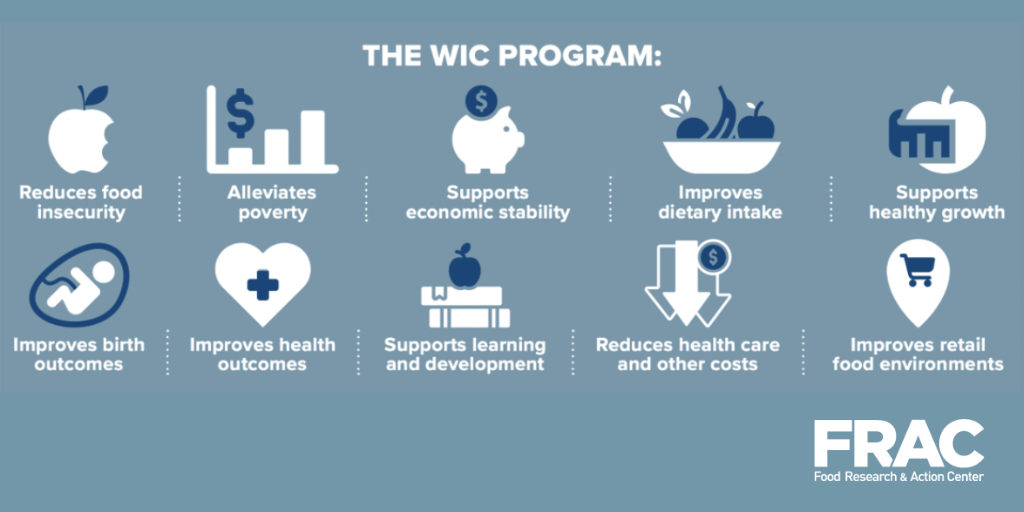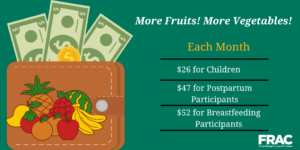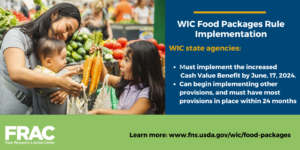May 8, 2024
The Special Supplemental Nutrition Program for Women, Infants, and Children (WIC) connects eligible infants, children up to age 5, and pregnant and postpartum people, to essential nutrition resources and support, including healthy foods, nutrition education, breastfeeding support, and health care and social services referrals. More than 50 percent of all infants born in the U.S. benefit from this vital health and nutrition program.

As WIC celebrates its 50th anniversary this year, the new WIC food packages promises to make the program even more of a powerhouse in improving the nutrition and health of the millions of participants around the country.
USDA Final Rule on WIC Food Packages
This month, the U.S. Department of Agriculture (USDA) published a final rule revising the WIC food packages. The rule includes important updates that will enhance equitable access to nutritious food, improve the nutritional quality of the foods offered, and make WIC more participant-centered. These changes will contribute to longstanding positive impacts on program participation, health outcomes for WIC participants, and efforts to address health disparities.
Of central importance, this update makes permanent increases in the Cash Value Benefit (CVB) for fruits and vegetables. The CVB for fiscal year 2024 is $26 for child participants, $47 for pregnant and postpartum participants, and $52 for mostly and fully breastfeeding participants.

The values will be adjusted by USDA in subsequent years to account for inflation. This increase cements and builds on important lessons learned from fruits and vegetables increases put in place during the COVID-19 pandemic.
The rule also makes the following significant improvements to better align the food package with the 2020–2025 Dietary Guidelines for Americans, and based on an independent science-based review completed by the National Academies of Sciences, Engineering, and Medicine:
- increases access to whole grains in breakfast cereal, bread, and grains,
- reduces the amount of sugar in yogurt and milk, and
- maximizes food choice to reflect dietary guidance and accommodate cultural and individual preferences, including traditional foodways, allergies, and vegetarian/vegan eating patterns.

The new rule also increases the allowable range of food packaging sizes to improve the ease of shopping and help reduce disparities in program delivery. This sets up the opportunity for more shopping choices for WIC participants when it comes to product size.
The USDA rule goes into effect June 17, 2024, and WIC state agencies must implement the increased CVB by then. Since WIC state agencies currently have the CVB in place at this level due to the appropriations bill, they are already in compliance, which should result in a seamless experience for WIC participants. For other key provisions, WIC agencies may begin implementation and must have them in place within 24 months of the rule’s publication (April 20, 2026), aside from the vitamin D requirement for yogurt for which they have 36 months to implement.

Next Up
This new rule is a win for the nutrition and health of children and families, and for our nation. The improvements are thanks in large part to the nationwide network of allies and national partners, and people with lived experience, who provided vital input on the package when the rule was proposed.
The improvements in the rule come on the heels of other key investments in this proven program, including the fiscal year 2024 appropriates and the White House’s “National Strategy on Hunger, Nutrition, and Health” commitment to strengthen WIC and improve customers’ experience.
So what can you do next?
- Dig in to learn more:
- Spread the word about the revisions and the importance of WIC:
- Plan for implementation:
- Check out the implementation components of FRAC’s comment on the draft rule for ideas to get started.


